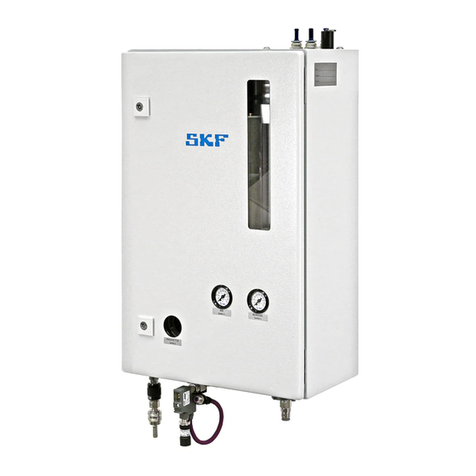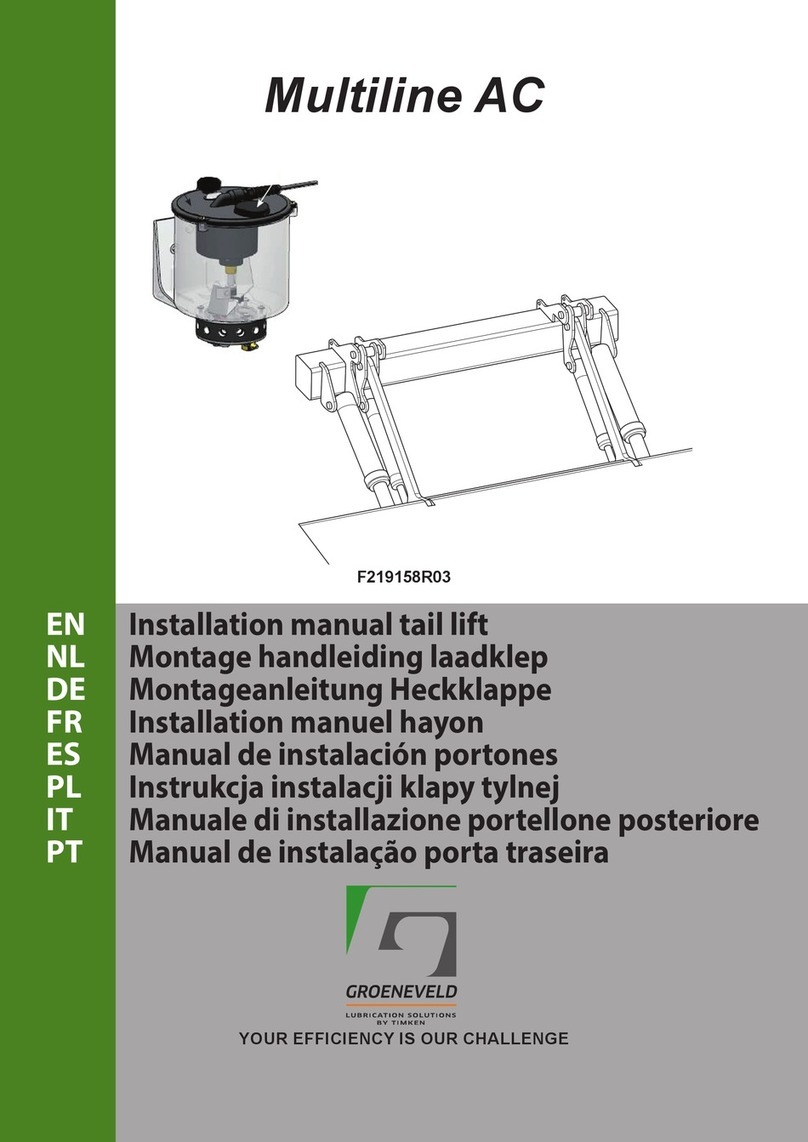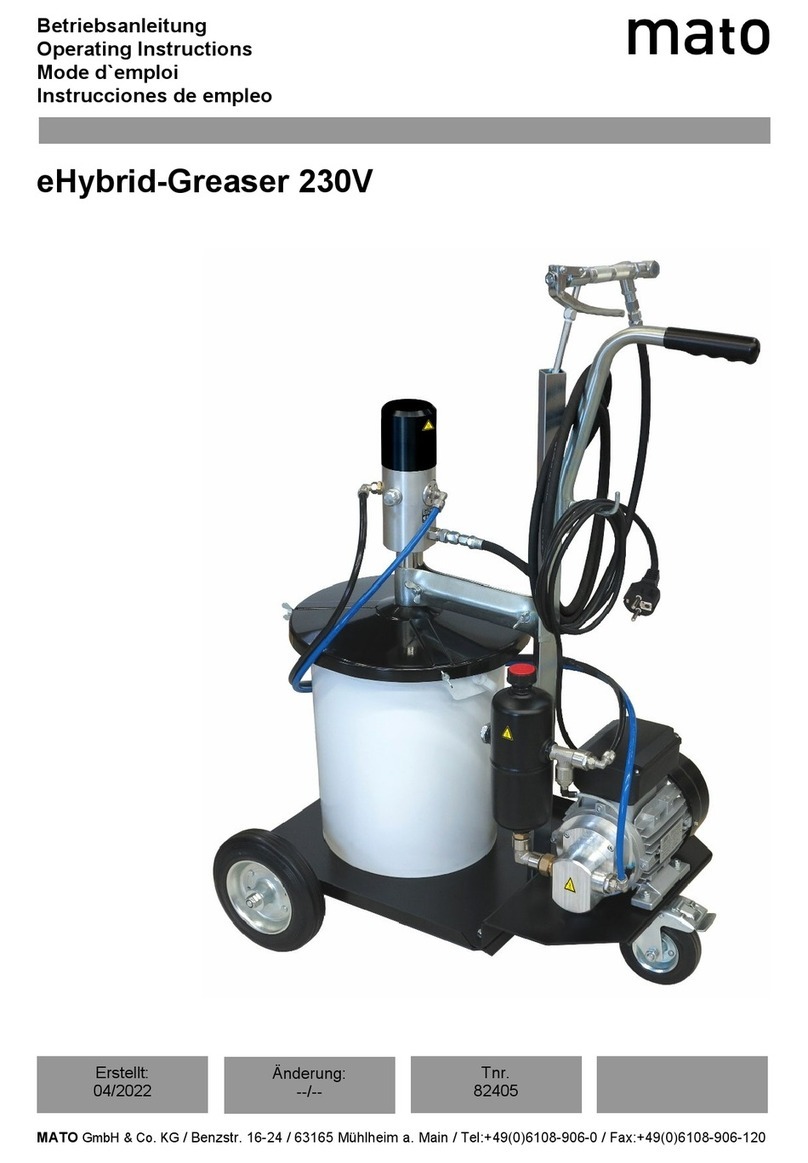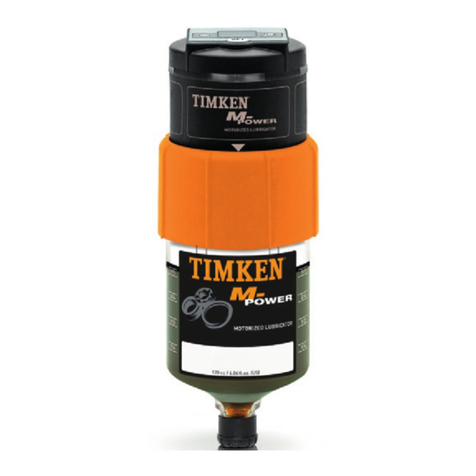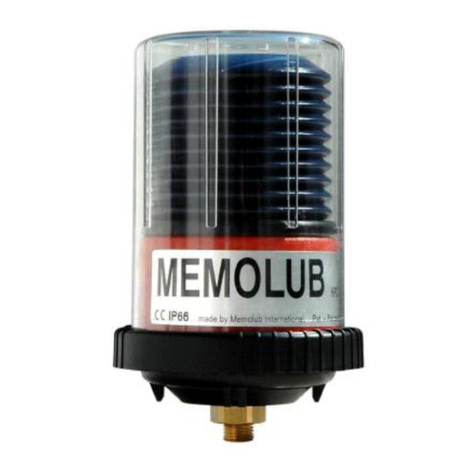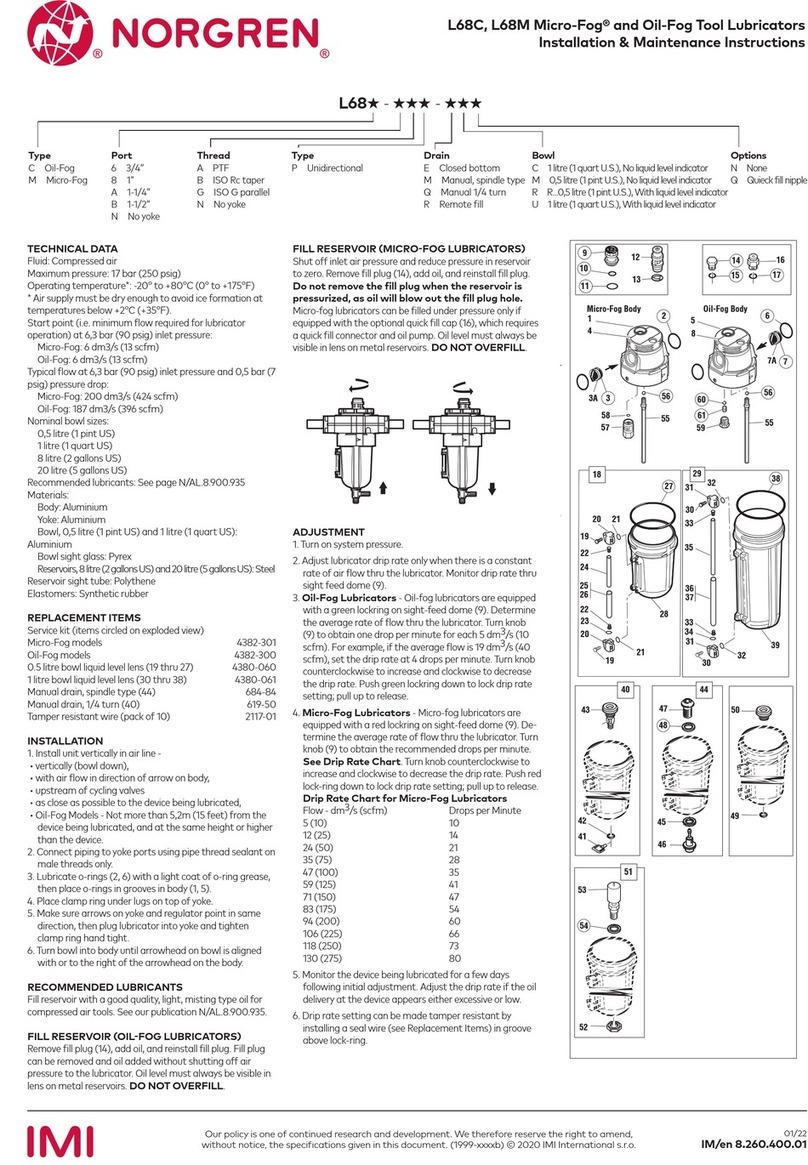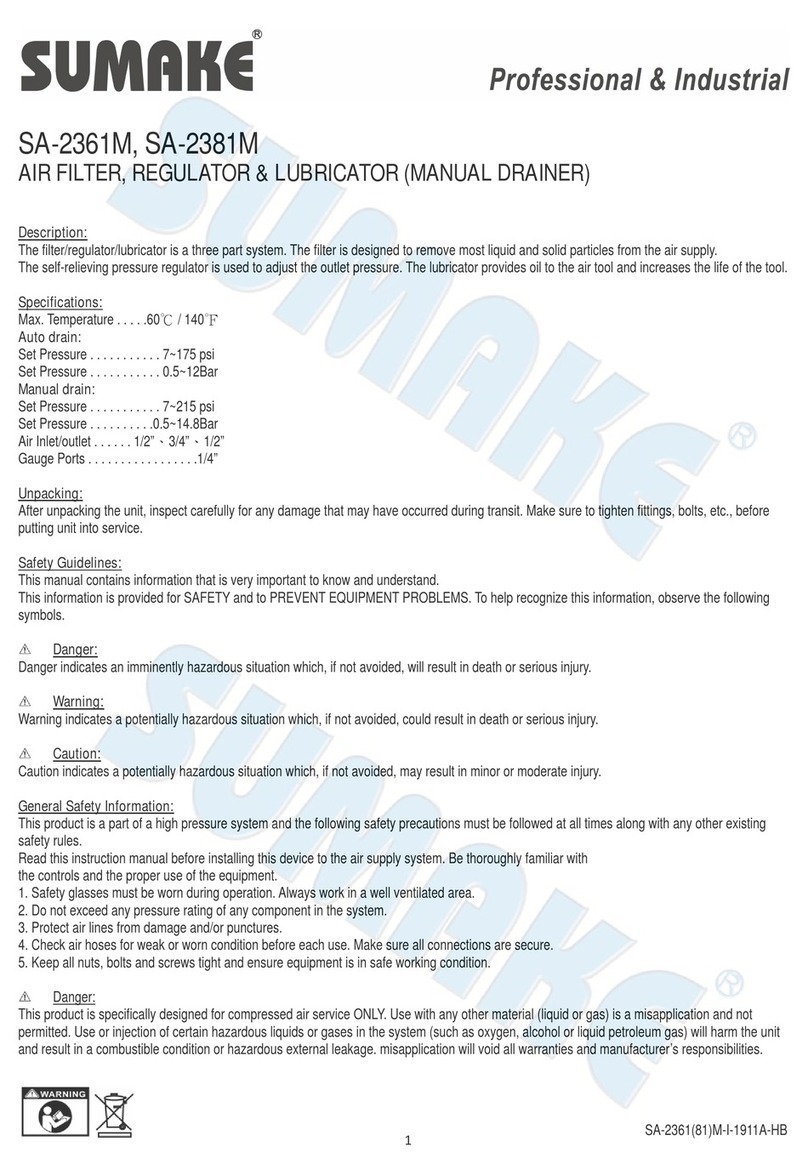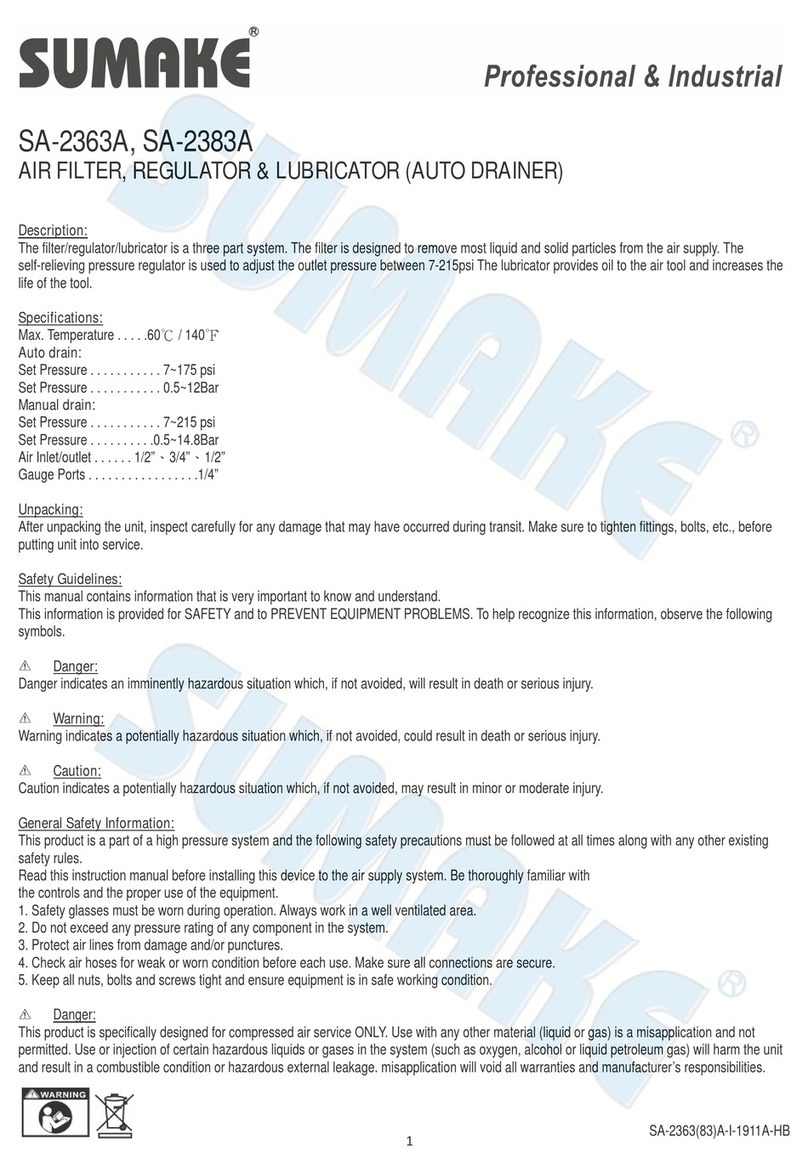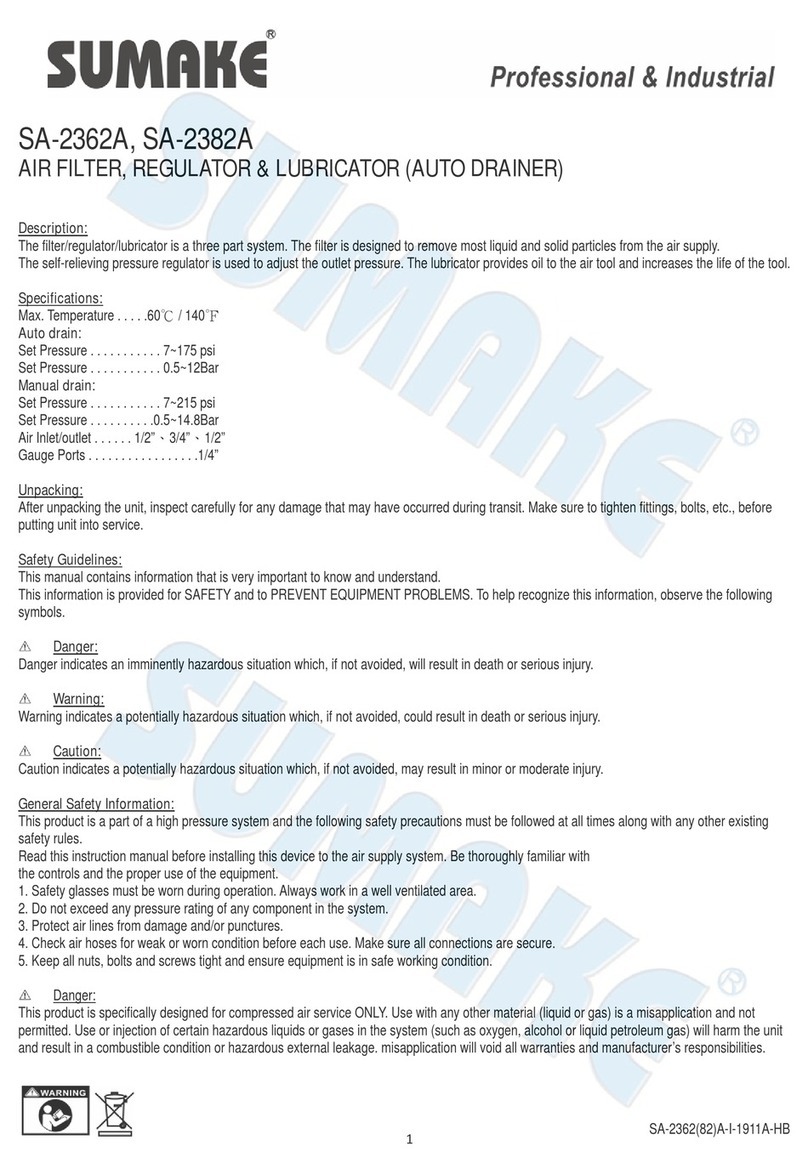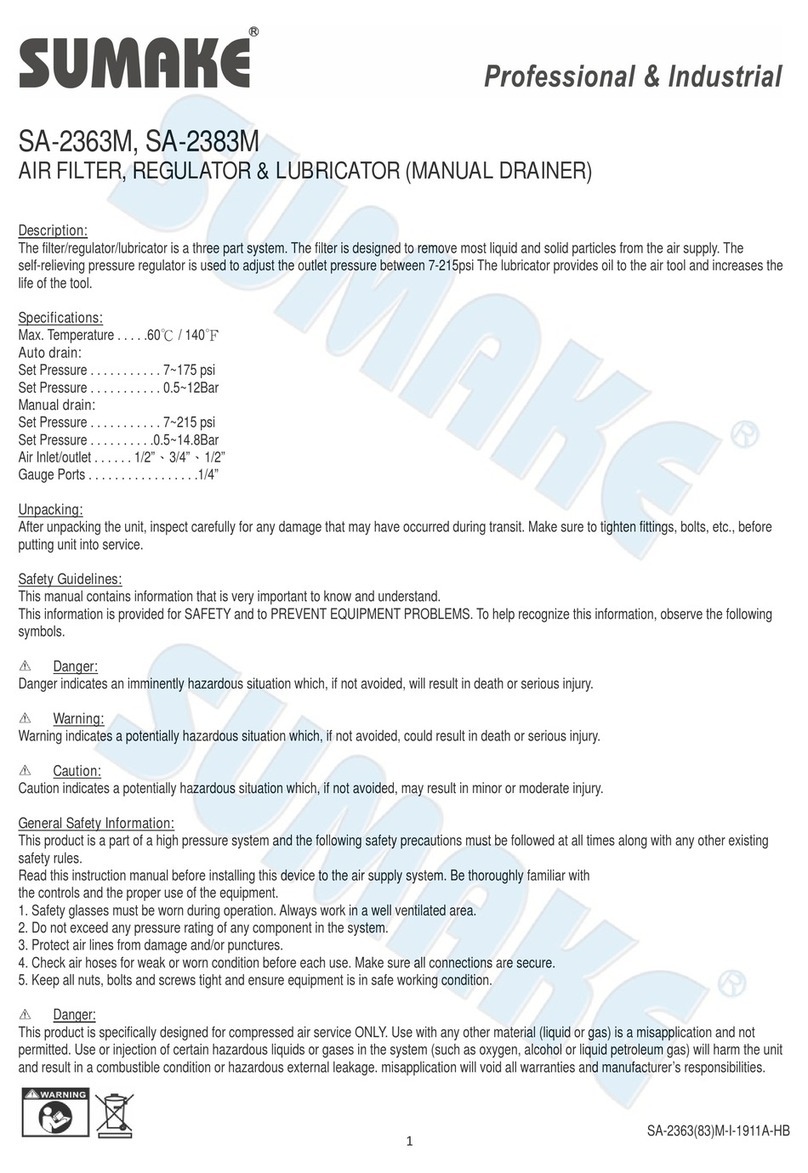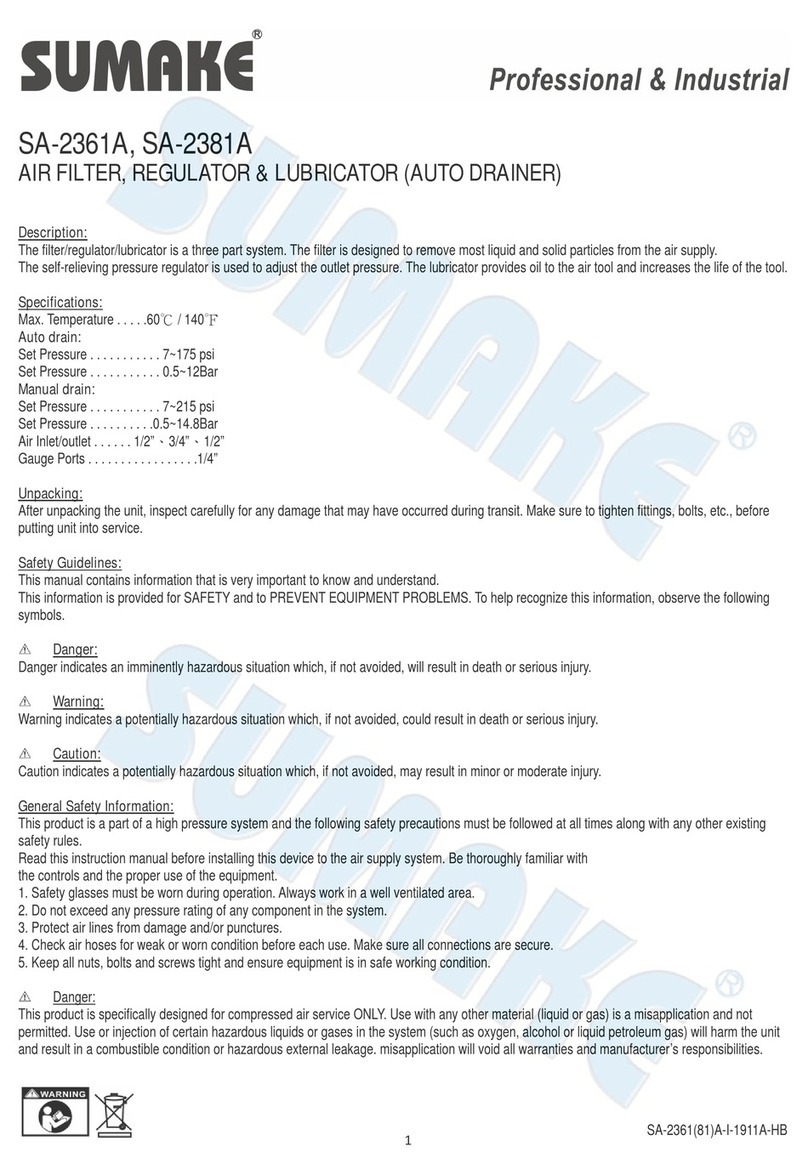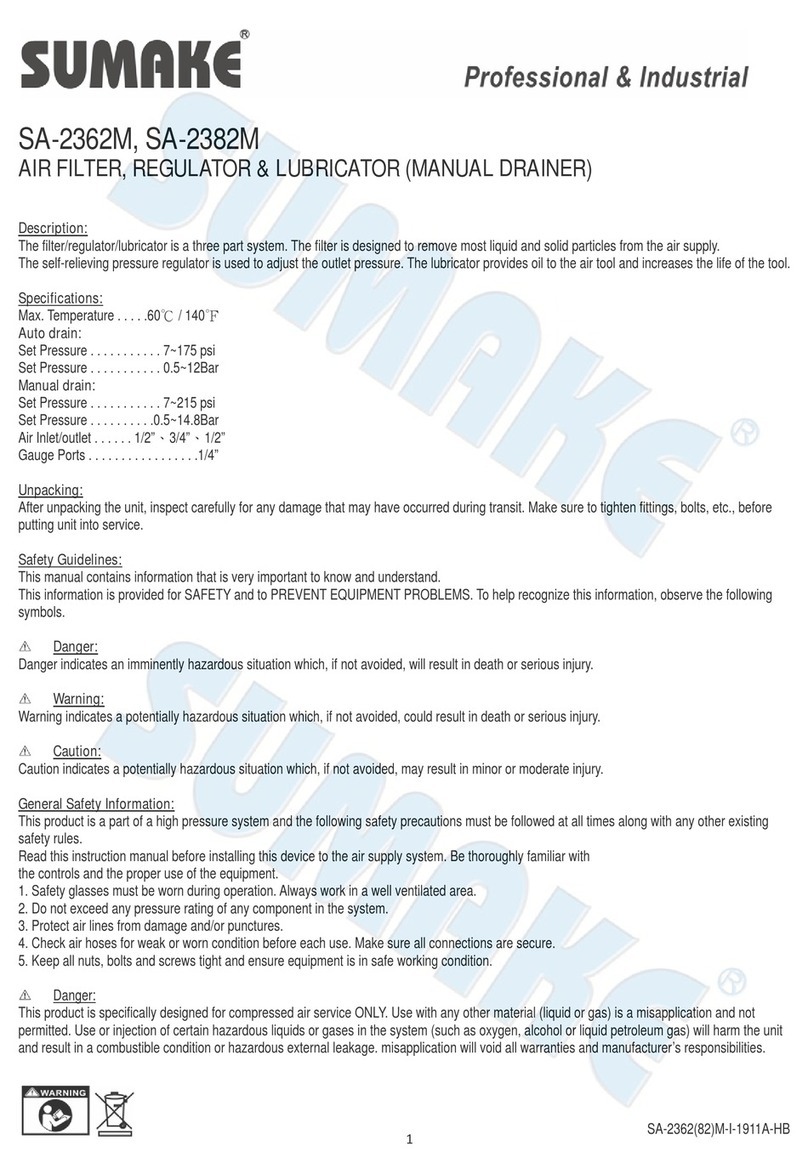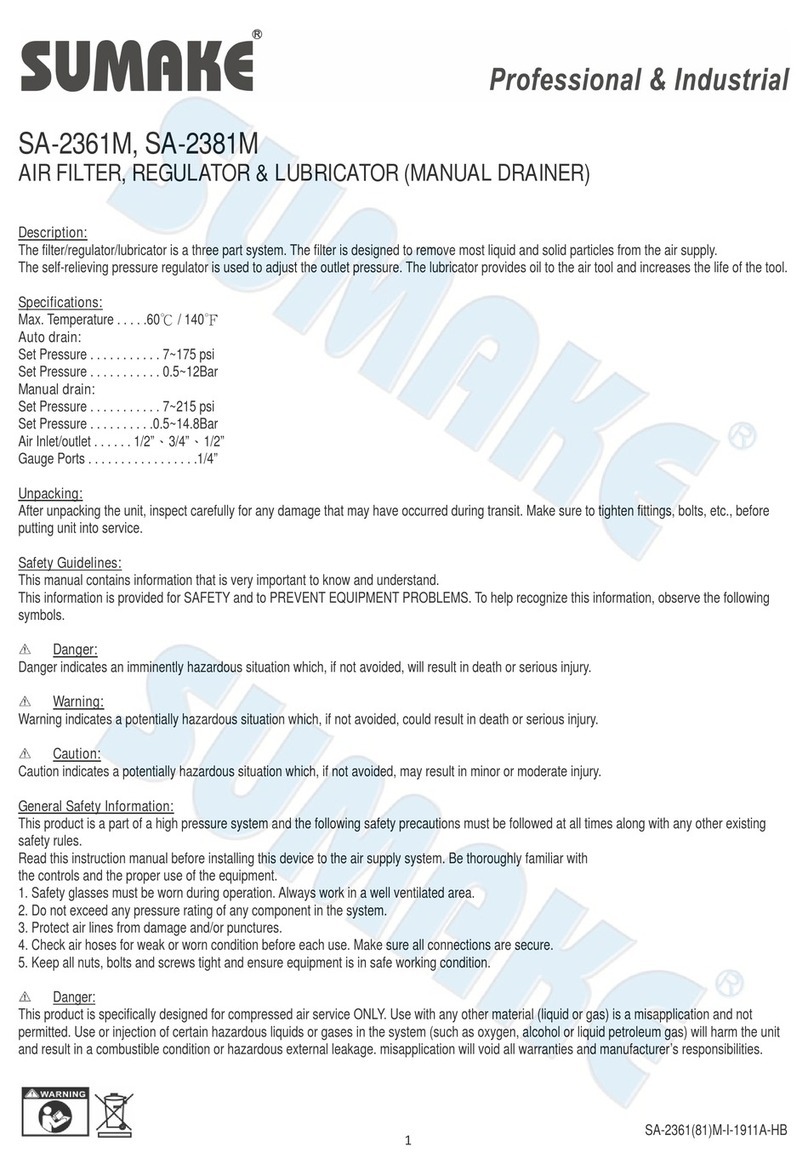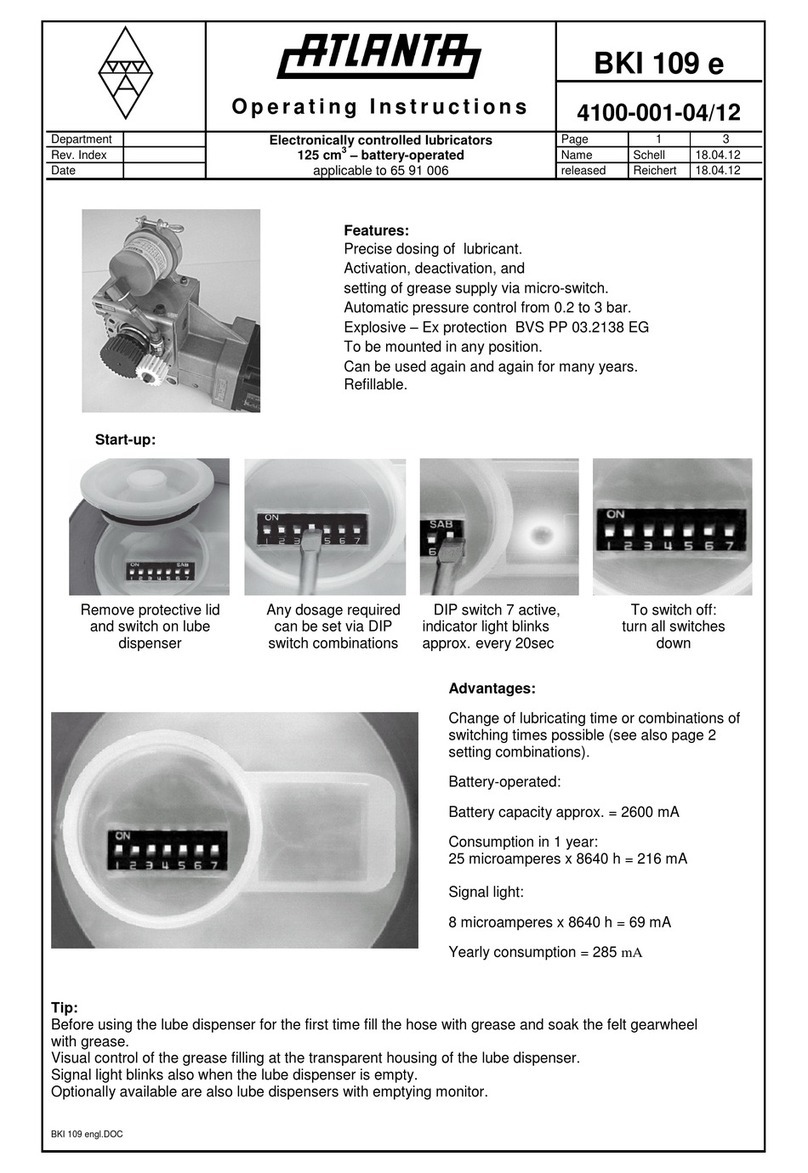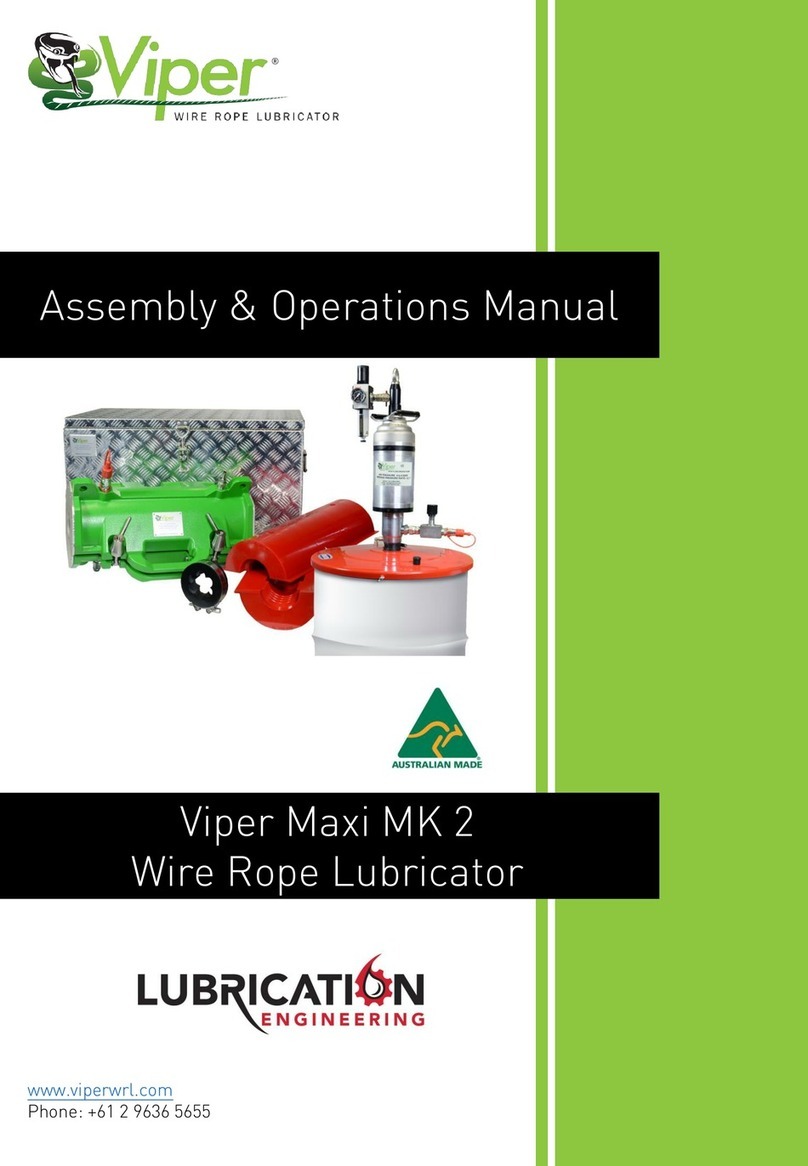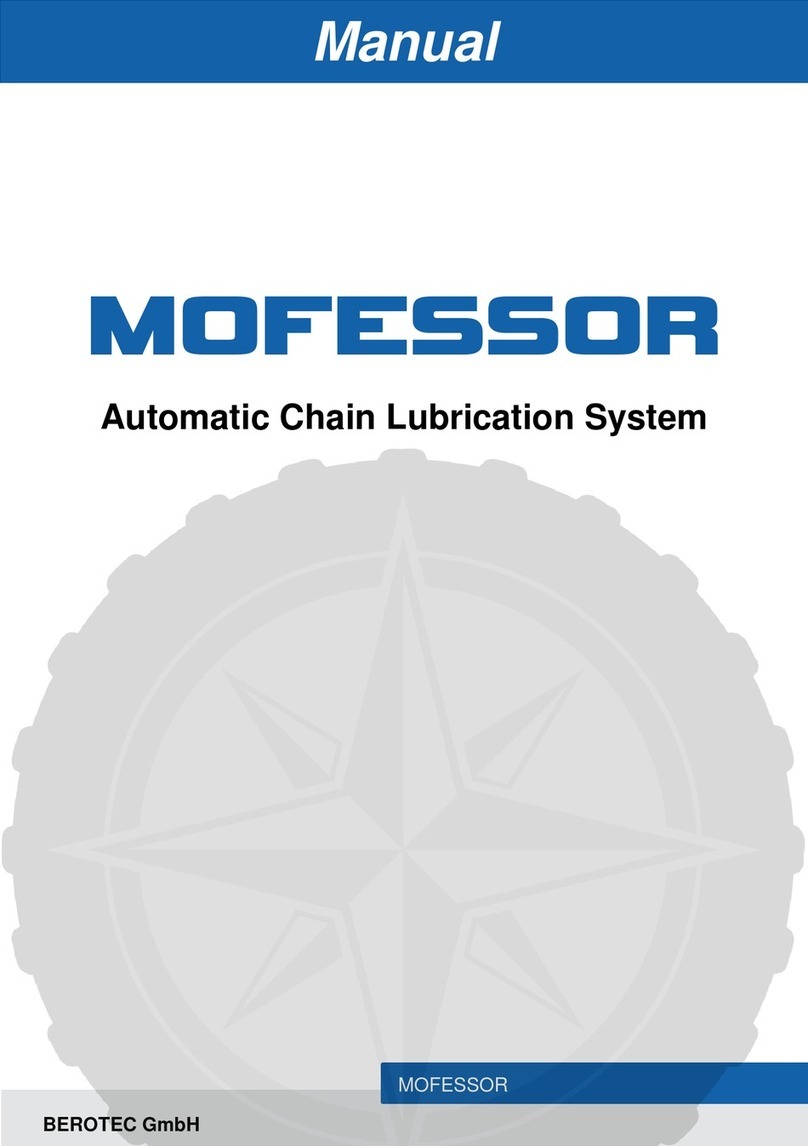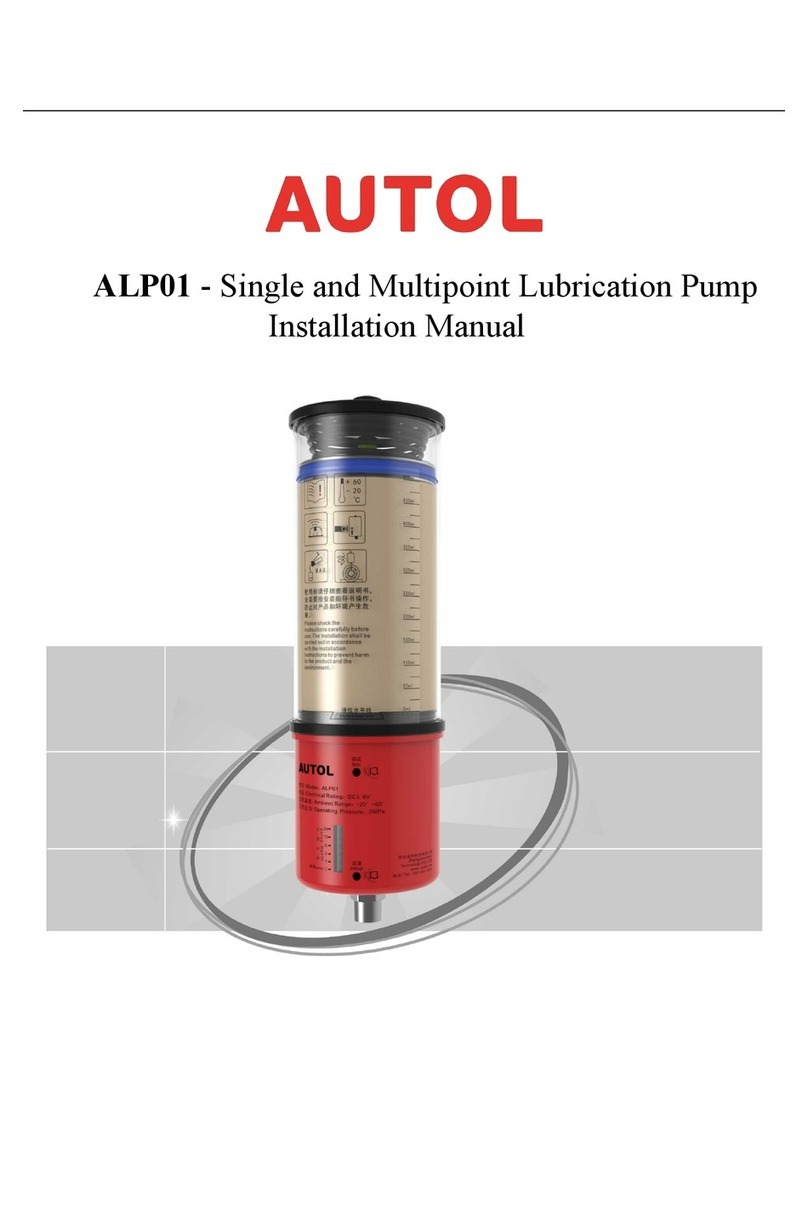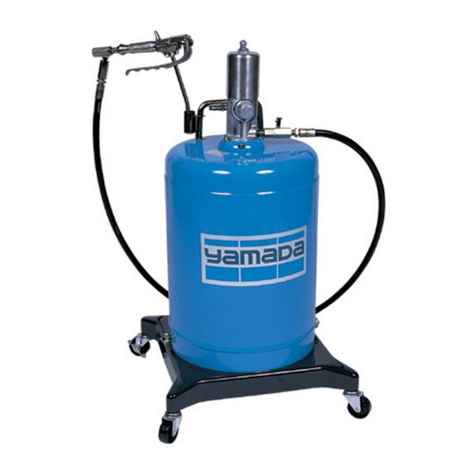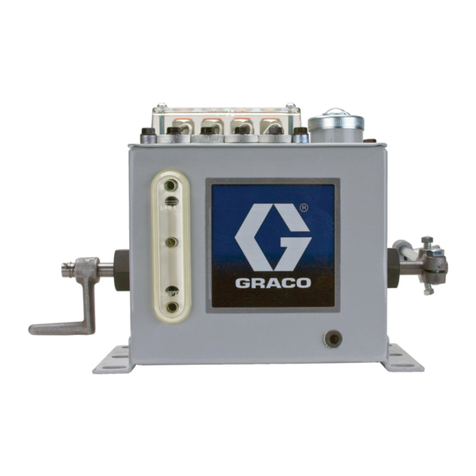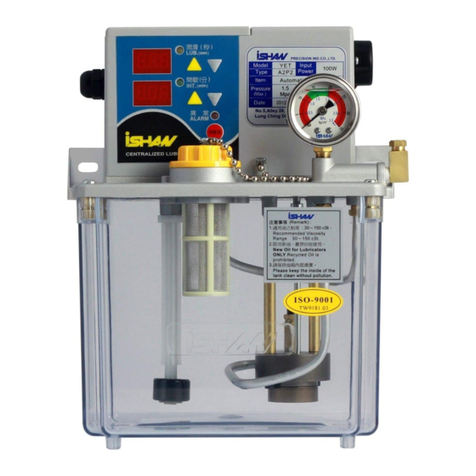
2
Danger:
The relief flow capacity of regulators is limited. Install additional pressure relief devices to alleviate over pressurized conditions. Written approval
must be obtained from manufacturer if this device is to be used for life support systems or other non-industrial applications.
Installation:
1. The assembly of all calibration shall meet the maximum flow requirement.
2. Direction air flow in the triangle “ ” on the primary unit.
3. Site as close to the unit to be protected as possible.
4. Place free of direct sun shine, hot area, and hazardous chemicals.
5. The water drainage shall be deployed beneath the water discharge for outlet of water into proper area.
6. Site as close to the unit to be lubricated as possible.
7. Direct installation of filter pressure regulator before the lubricator.
8. Add the lubricant into the oil cup.
Operation/Maintenance:
A. Filter
1. Before pressurizing system, make certain the bowl is securely locked in place by hand tightening the bowl ring until it is snug.
2. Unlock the regulator adjusting knob by pulling knob away from the regulator.
3. Turn the regulator adjusting knob counterclockwise until no load is on the regulating spring.
4. Turn on the air pressure supply and turn the adjusting knob clockwise until the desired outlet pressure is reached. Push the regulator adjusting
knob toward the regulator to lock in desired pressure.
5. Inspect and replace cracked, damaged or deteriorated seals. wipe bowls with a soft, dry cloth to clean.
6. Replace filter element moment: when filter element dirty bring flow and filter effect become less.
7. Drain bowls at least once per work shift. to avoid spray or splatter, cover bottom of filter with a cloth and turn the manual drain.
8. Before placing the unit in service, make sure the bowl is reinstalled and securely locked in place.
9. Drainage:
a. When water exceeds the level, please drain off the water, press up the bottom of brass drain body, then it will start to drain.
b. when the water level exceeds the maximum limit, please drain off the water to keep optimal dehumidification.
B. Lubricator
1. Before pressurizing system, make certain the bowl is securely locked in
place by hand tightening the bowl ring until it is snug.
2. Fill the lubricator bowl with oil.
3. The oil flow is controlled by the narrow cylindrical adjustment screw (see
Figure 1).Turn counterclockwise for more or clockwise for less oil delivery
rate automatically adjust with changes in air flow.
4. The lubricator can be filled while the system is under pressure. Slowly
remove the oil fill plug (see Figure 1) to allow relief of air pressure.After the
oil fill plug has been removed. Pour oil into the lubricator and then replace it.
Replace the oil fill plug before resuming operation.Alternatively, the bowl can
be removed once the oil fill plug is removed. If the bowl is removed to
replace the oil, be certain the bowl is back in place and bowl ring tight before
replacing the oil fill plug.
5. Minimum Dripping Flow Rate :
3/4":190 / 1":220 (L/min(ANR))*
The flow rate is 5 drops or greater/min under the following conditions :
Inlet pressure of 0.5 MPa; Class 1 turbine oil (ISO VG32);
Temperature at 20°C; Oil adjustment valve fully open.
For a circuit that repeatedly turns ON and OFF on the outlet side,
make the adjustment so that the average air consumption per minute
becomes the minimum dripping flow rate or more.
Lubrication cannot be properly performed if the operating flow rate is
too low. Select an appropriately size lubricator by referring to the
minimum dripping flow rate provided in the catalog.
